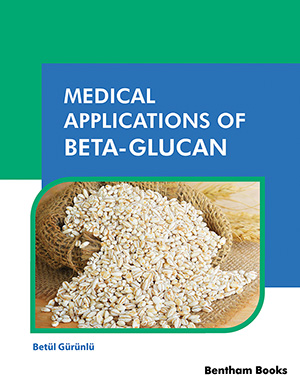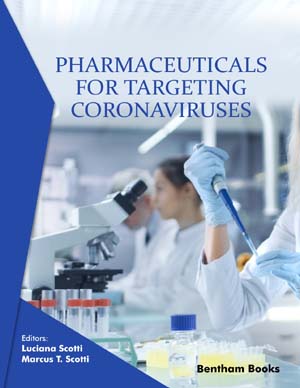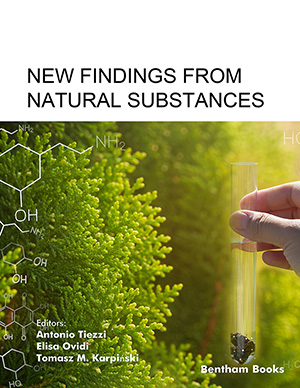List of Contributors
Page: iii-iv (2)
Author: Javed Ahmad and Javed Ahamad
DOI: 10.2174/9789811464485120010003
Drug Discovery from Plant Sources: Scope, Approach and Challenges
Page: 1-13 (13)
Author: Javed Ahmad and Javed Ahamad
DOI: 10.2174/9789811464485120010004
PDF Price: $15
Abstract
Medicinal plants are recognized to fulfill human necessities like food, clothes, shelter and health. The search for eternal health and longevity to seek remedy to relieve discomfort prompted mankind to develop many ways and means of health care systems. Traditional medicines were practiced in ancient civilizations for the cure of ailments. In recent years, natural products play a very important role in drug discovery for life-threatening ailments like cancer, malaria, diabetes and cardiovascular problems. Recently, drug discovery from plants for the treatment of cancer gets more focused and leads to the discovery of novel anticancer drugs such as paclitaxel, docetaxel, topotecan, irinotecan, vincristine and vinblastine. Drug discovery from plants is a long and tedious process, and it requires selecting suitable plants, preclinical screening, clinical evaluation and drug approval for marketing. Herbal medicines obtained from plants are generally considered safe compared to synthetic drugs, and secondary metabolites obtained from plants have more chemical diversity and considered superior to synthetic combinatorial chemicals. In this book chapter, we comprehensively discussed the advantages and role of higher plants in drug discovery, steps and approaches of drug discovery from higher plants.
Cultivation, Collection and Processing of Medicinal Plants
Page: 14-30 (17)
Author: Omji Porwal, Sachin Kumar Singh, Dinesh Kumar Patel, Saurabh Gupta, Rahul Tripathi and Shankar Katekhaye
DOI: 10.2174/9789811464485120010005
PDF Price: $15
Abstract
Nature has provided us better surroundings for the expansion and development of medicinal plants for thousands of years. Medicinal values of plants date back to ancient times on belief of its safety and economic value. Even in today’s scenario, about 80% of the globe population primarily depends on the alternative system of medicines for their foremost healthcare requisite. Plants contain different types of secondary metabolites also called bioactive components of the plants responsible for their medicinal value in nature. Scientific cultivation permits the applying of contemporary technological aspects like mutation, polyploidy and hybridization for the development of a better amount of secondary metabolites from the plants and their byproducts. Cultivation, collection and preservations of medicinal plants need simple techniques that preserve the medicinal values of natural products. Pharmacological activities of medicinal and aromatic plants are mainly depending upon the presence of various bioactive phytochemicals like alkaloids, glycosides, tannins, resins, volatile oil, etc. Growth and development of medicinal plants and their secondary metabolites are mainly influenced by the physical surroundings, sunlight, temperature, rainfall, and nature of the soil. Seasonal variation and geographical region can also affect the quality of medicinal and aromatic plants as the concentration of bioactive constituent could be changed through natural factors. In the present book chapter, we have discussed all the important information needed for the cultivation, collection and processing of medicinal and aromatic plants that affect the quality of medicinal plants.
Extraction of Bioactive Phytochemicals
Page: 31-53 (23)
Author: Javed Ahamad, Naila Hassan Ali Alkefai and Shehla Nasar Mir Najibullah
DOI: 10.2174/9789811464485120010006
PDF Price: $15
Abstract
The success of pharmacological or analytical study depends upon proper choice of the extraction method. As extraction process is the starting step in the evaluation of any herbal drug, hence it should be designed in such a way that the extracts contain maximum amount of desired secondary metabolites. Several classical extraction methods are used since ancient times, such as percolation, digestion, decoctions, and maceration. Due to the advancement in technology, several extraction techniques have been developed, such as ultrasound assisted extract, microwave assisted extraction, pressurized liquid extraction, supercritical fluid extract and enzyme assisted extraction. These extraction techniques provide samples for qualitative and quantitative analysis of the natural product. The extracts obtained from these extraction methods are also used for the isolation and characterization of bioactive natural products. This book chapter provides a comprehensive overview of a variety of classical and modern extraction methods used in drug discovery and development from the natural product.
Isolation and Purification of Bioactive Phytochemicals
Page: 54-72 (19)
Author: Kamran Javed Naquvi, Javed Ahamad, Raad A Kaskoos, Naila Hasan Ali Alkefai, Afrin Salma and Showkat R. Mir
DOI: 10.2174/9789811464485120010007
PDF Price: $15
Abstract
Various forms of natural products such as plant extracts, pure phytochemicals and herbal formulations containing natural products offer tremendous opportunities for new drug discoveries and the credit goes to its chemical diversity. Since time immemorial medicinal plants in its various forms and have been used to treat chronic diseases such as malaria, tuberculosis, cardiovascular diseases, etc. Recently along with the crude form of medicinal plants and their isolated active principles are also being used to cure several maladies. Isolation of bioactive constituents from the medicinal plants has always been a challenge because of the complexities involved in separation process, but the recent technological advancement in this field has facilitated the isolation process of chemical constituents from the plants. This book chapter offers a comprehensive review on the procedural techniques and application of classical column chromatography, prep-TLC, modern isolation and purification techniques such as flash chromatography, prep-HPLC, prep-GC, counter current chromatography, etc.
Spectroscopic Techniques for the Structural Characterization of Bioactive Phytochemicals
Page: 73-99 (27)
Author: Showkat R. Mir, Tara Fuad Tahir, Javed Ahamad, Raad A Kaskoos, Naila Hassan Ali Alkefai and Abdul Samad
DOI: 10.2174/9789811464485120010008
PDF Price: $15
Abstract
This chapter deals with the structural elucidation of natural products using UV-visible, FT-IR, NMR (1D and 2D) spectroscopy and Mass spectrometry. Key concepts associated with these techniques are introduced here. Various spectra of natural compounds have been included with a brief discussion of the functional groups and structural features that they reveal. The use of these spectroscopic techniques in drug discovery from natural products has been reviewed, highlighting the advantages of these techniques. The importance of each technique is discussed with suitable examples of natural products obtained from medicinal plants. Some of these techniques, such as FT-IR and NMR spectroscopy, are primarily used for identification purposes; while UV-visible spectroscopy and mass spectrometry are used for the purpose of analysis and structural elucidation. Recent advancements in the isolation techniques such as counter-current chromatography, supercritical fluid chromatography, preparative high-performance liquid chromatography (prep-HPLC), and preparative gas chromatography (prep-GC) have made the availability of novel natural compounds from plants possible for their structural elucidation and biological screening. Development of hyphenated techniques such as LC-NMR, UPLC-MS, and GC-MS have made simultaneous isolation and structural elucidation of natural products achievable. In this chapter, we have summarized basic principles of UVvisible, FT-IR, 1D and 2D NMR spectroscopy and mass spectrometry and their role in the determination of structures of natural compounds citing suitable examples.
Pharmacological Evaluation of Herbal Medicine
Page: 100-120 (21)
Author: Subasini Uthirapathy, Javed Ahamad, Jaswanth Albert and Govind Prasad Dubey
DOI: 10.2174/9789811464485120010009
PDF Price: $15
Abstract
Natural products broadly incorporate plant-based product as well as marine, plants, microorganisms and minerals. There are several animal products that are also consumed by humans as a food health supplement and also medicine. Herbal products have a variety of phytocompounds. . The identification of these molecules is essential for standardization and quality control of the herbal products. The world wide variety of plants and their species have been identified and i.e. 250000. Morphological and chemical constituents of plant species vary from one ethnic group to another. Humidity, temperature and altitude soil conditions are all responsible for both structural and functional characteristics of the natural products. Therefore standardization and quality control are the big challenges before using natural products. Heavy metal toxicity, microbial load and aflotoxin are the major and important parameters of evaluation of the safety profile of the natural products. Therefore, before using the natural product, we should characterized the structural variation to establish structural and functional relationships. In the present paper, some of the experimental models have been described, which will be useful in the preparation of standard plant based products.In order to provide standard product, some important experimental methods have been described in this paper. Herbal medicinal products have a wide scope of assorted variety of multidimensional synthetic structures; in the ongoing occasions, the utility of normal items as natural capacity modifiers has impressive consideration. The botanical study evaluated the identification of 250,000 to 350,000 plant species over the planet. Notwithstanding, only around 35,000 species have been utilized in various networks of the world for the treatment of different infirmities. Nonetheless, this exceptional fortune needs exhaustive consideration as far as biological and pharmacological screening to serve humankind against different diseases. The traditional system of treatment, varying in idea and convention, represents well-created frameworks, for example, Allopathic, Homeopathic, Ayurvedic and Chinese system of treatment. A large portion of the enlightened countries has built up their own Materia Medica, assembling insights concerning different plants utilized for remedial purposes. This chapteris focused on the diverse pharmacological screening techniques with point by point illustration of genuine biological investigations that are useful to discover new bioactive phytochemicals in antidiabetic, analgesic,antiinflammatory, neuroprotective, anti-obesity, and depression disorders and so on. Preclinical study is strictly required to follow CPCSEA guideline into the pharmacological practical.This chapter provides essential knowledge of practical features of the experimental Screening pharmacology right from laboratory animal handling, the important techniques and methodology used in experimental pharmacology. The experimental procedure described in this chapter is planned on the basis of strong technical materials and personal knowledge in hands-on experiments under the guidance of renowned personalities. This chapter is arranged to understand the experimental animal handling techniques by witnessing the induction experiments. These experimental procedures will be helpful for graduates and postgraduates students associated with pharmacology, toxicology and researcher. Simple and newer animal models have been combined, which may help the students to occupy in new drug development activities. Also, some important points have been conferred e.g. ethics of animal experimentation, blood collection techniques, euthanasia, animal care and handling.
Product Development of Herbal Medicine
Page: 121-142 (22)
Author: Ahmed Nawaz Khan, Chandra Kala and Javed Ahmad
DOI: 10.2174/9789811464485120010010
PDF Price: $15
Abstract
Treating diseases with medicinal plants is considered as the oldest therapeutic method that provides relief from illness to the whole humankind. In developing countries, a large group of the population have been found using phytotherapy for centuries, and still, they are following the same remedies. Preparation and compounding of one or more herbs containing phytochemicals lead to the production of finished herbal products, which are formulated from dried roots and extracts. Widespread use of these products requires quality and safety with good manufacturing practices and stringent evaluation criteria. From basic to advance, this chapter addresses the challenges and procedures ranging from harvesting, selection of plants, extraction, and formulation to the product approval by following the good agriculture, laboratory practice and good clinical practice and it would be a helpful medium for consideration during the product development period. As a whole, this chapter gives an overview to academicians, researchers, and industrial personnel for a better understanding of herbal products.
Quality Control of Herbal Medicinal Products
Page: 143-157 (15)
Author: Javed Ahamad, Esra T. Anwer, Muath Sh. Mohammed Ameen, Jamia Firdous and Nehal Mohsin
DOI: 10.2174/9789811464485120010011
PDF Price: $15
Abstract
The quality control of medicinal agents derived from natural sources is of paramount in ensuring safety and efficacy. The major hindrance in the acceptance of herbal medicines into modern medical practices is the lack of scientific and clinical data on the safety and efficacy of the herbal products. In general, there is a lack of strict guideline for quality control of herbal medicinal products used for the treatment of various human diseases. In recent years, due to enormous increased interest in herbal medicine, we need strict quality control parameters for safe and efficacious herbal medicine. Several quality control parameters (e.g. organoleptic, morphological, physico-chemical, chromatographic and toxic substances) are mentioned in Pharmacopoeias like Indian Pharmacopoeia (IP), British Herbal Pharmacopoeia (BHP), Ayurvedic Pharmacopoeia of India (API) and WHO guidelines etc. Chromatographic techniques, such as TLC, HPTLC, HPLC, GC-MS; and toxic substances such as aflatoxins, heavy metals, pesticide residues, microbial load determinations, are important parameters considered for quality control of herbal drugs. This book chapter provides a critical overview of different quality control parameters of herbal drug, which are necessary for compliance of regulatory guidelines of several developing and developed countries.
Regulatory perspectives of Herbal Medicinal Products
Page: 158-175 (18)
Author: Faraat Ali*, Shaik Khasimbi, Kamna Sharma, Manisha Trivedi, Asad Ali and Javed Ahmad*
DOI: 10.2174/9789811464485120010012
PDF Price: $15
Abstract
Quality control of medicinal agents derived from natural sources is paramount in ensuring safety and efficacy. In the modern medical practice, the major obstacles for the acceptance of herbal medicines are the lack of scientific and clinical data on safety, quality and efficacy in herbal products. In general, there is no quality control of medicinal products in many countries. Strict regulatory guidelines on herbal products are followed only in few countries like Canada, Europe, Australia, the USA, and Japan. In recent years, due to the enormous increased interest in herbal medicines, we need strict regulatory guidelines to ensure safety and efficacy of herbal medicine. The regulatory guidelines should focus mainly on laws related to the registration of herbal medicines for manufacturing and marketing. This book chapter will provide a comprehensive overview of a regulatory guidelines, required for manufacturing and marketing of herbal medicines in regulated, semi-regulated and unregulated markets. This book chapter also comprises discussion over global need of harmonization of regulatory guidelines to ensure safe and effective use of herbal medicines.
Phytochemicals for the Treatment of Human Diseases
Page: 176-213 (38)
Author: Javed Ahamad, Subasini Uthirapathy, Kamran Javed Naquvi, Muath Sh. Mohammed Ameen, Esra T. Anwer, Abdul Samad and Mohammad Shabib Akhtar
DOI: 10.2174/9789811464485120010013
PDF Price: $15
Abstract
Medicinal plants are a major source of remedies for the treatment of human ailments in under-developed and developing countries. Traditional or alternative medicines were practiced in ancient civilizations for the cure of human ailments. In recent years, natural products play a vital role in drug discovery for life-threatening ailments like cancer, malaria, diabetes, and cardiovascular problems. Due to the advancement of scientific techniques, isolated phytochemicals can be developed as a medicine for lifestyle and chronic disorders. Herbal medicinal products are also developed for effective treatment of several diseases like cancer, malaria, diabetes, cardiovascular complications, etc. Recently,drug discovery from plants for the treatment of cancer has become more focused, leading to the discovery of novel anticancer drugs such as paclitaxel, docetaxel, topotecan, irinotecan, vincristine, and vinblastine, etc. In this book chapter, we have discussed important medicinal plants and bioactive natural products for the treatment or management of diabetes mellitus, cancer, obesity, and cardiovascular complications.
Subject Index
Page: 214-221 (8)
Author: Javed Ahmad and Javed Ahamad
DOI: 10.2174/9789811464485120010014
Introduction
Natural bioactive compounds from medicinal plants are inexplicably diverse in chemical structure and biological properties. The unmet therapeutic requirements for various diseases serve as a guide for researchers to study natural compounds. These studies are intended to isolate, identify the structural characterization and eventually discover the pharmacological activity of natural compounds from their plant sources with the goal of treating specific diseases. Bioactive Phytochemicals: Drug Discovery to Product Development explores the scope and approaches of drug discovery from natural products. Chapters in the book cover information about the cultivation, collection and processing of medicinal plants, the methods and high throughput techniques for isolation and characterization of bioactive phytochemicals and pharmacological screening for activity, formulation and quality control. Information about the regulations specified for natural medicinal products in different region of the world is also presented, followed by a concluding chapter devoted to the role of natural herbal products for treatment of human diseases such as cancer, cardiovascular diseases, diabetes, obesity, inflammation and neurological disorders. Each chapter concludes with a general reference section, which is a bibliographic guide to more advanced texts. The contributing authors for this volume are drawn from a rich blend of experts in various areas of herbal medicine which encompass herbal drug discovery to product development. The concise and organized layout along with a broad coverage of phytochemistry and drug discovery makes this book a suitable reference for students of medicinal chemistry, researchers and industry professionals interested in herbal product development.






















